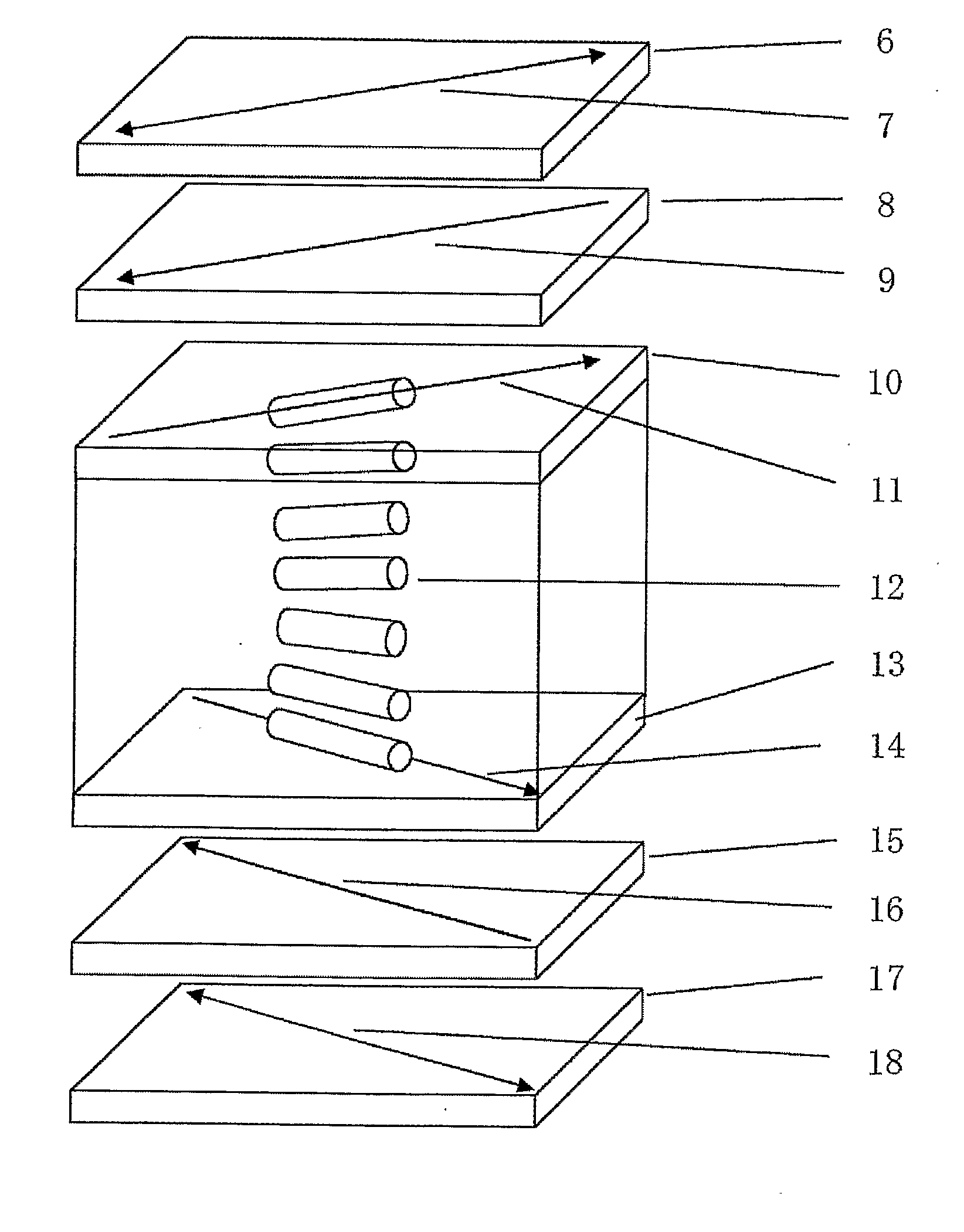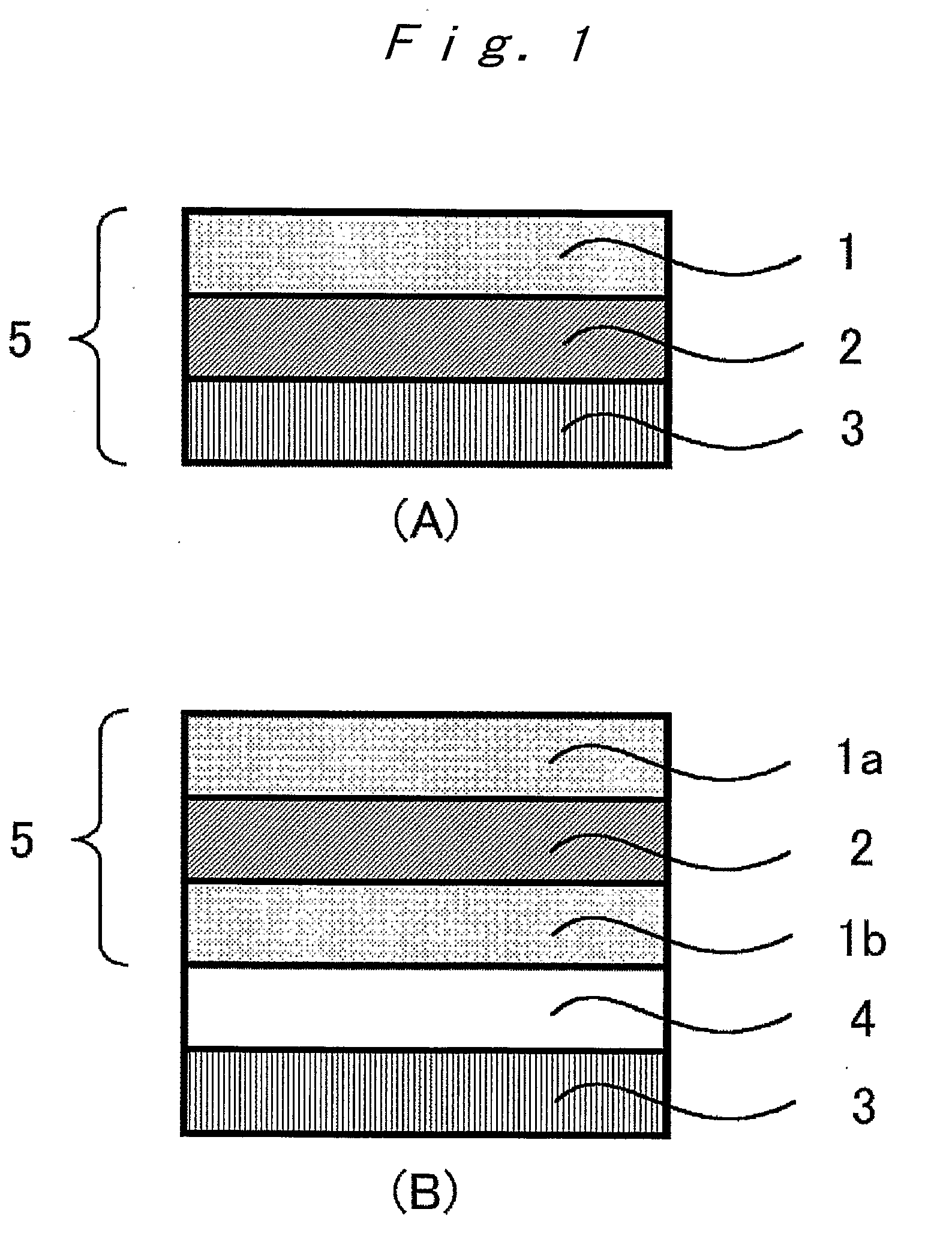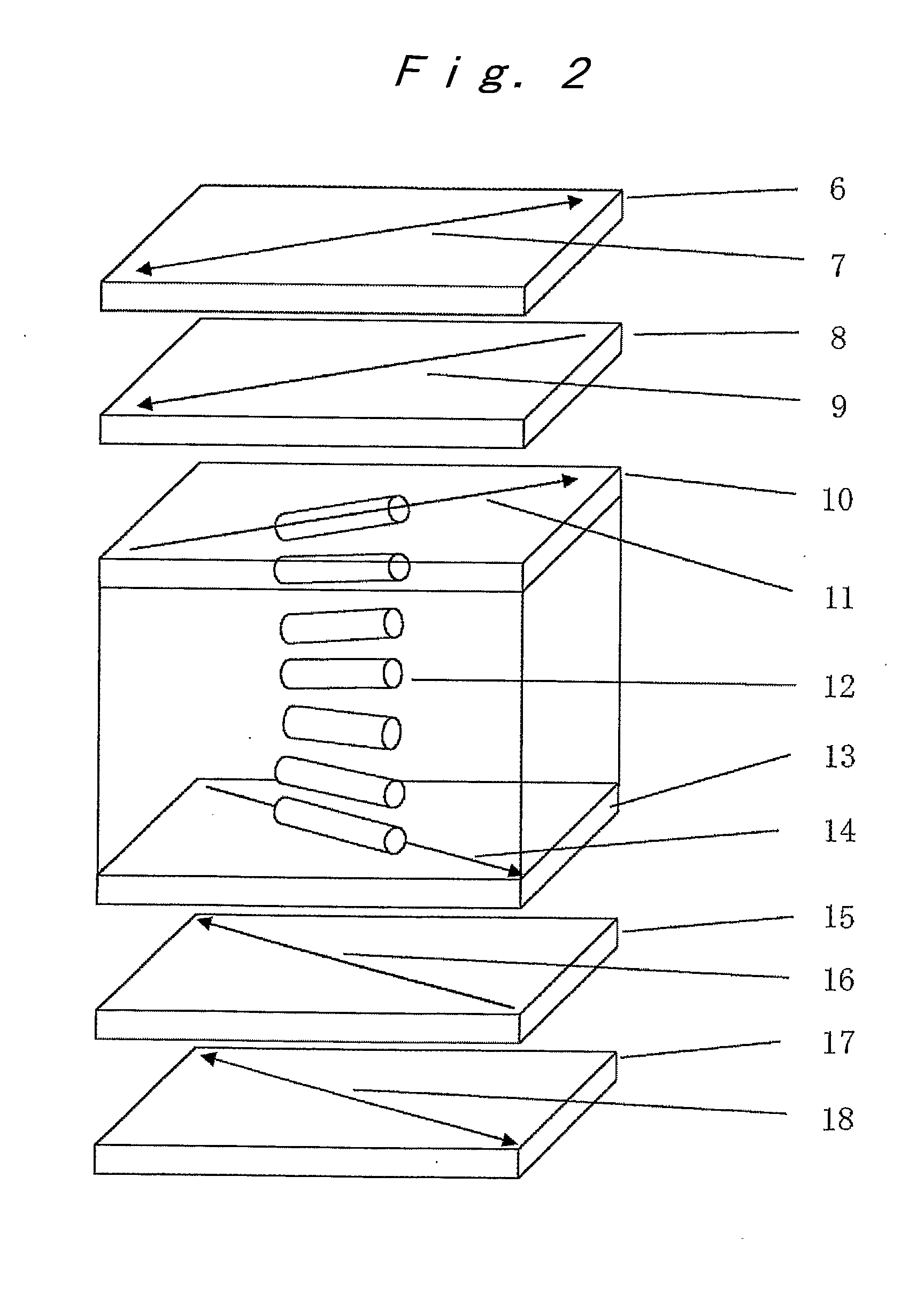Optical film, optical compensation sheet, polarizing plate, and liquid crystal display device
a liquid crystal display device and film technology, applied in the direction of polarizing elements, camera filters, instruments, etc., can solve the problems of difficult to make cellulose triacetate have a large birefringence, increase the surface of the film, and improve the problem of problem solving
- Summary
- Abstract
- Description
- Claims
- Application Information
AI Technical Summary
Benefits of technology
Problems solved by technology
Method used
Image
Examples
synthetic example 1
Synthesis of the Exemplified Compound A-1
[0136]24.6 g (0.116 mol) of 3,4,5-trimethoxybenzoic acid, 100 mL of toluene, and 1 mL of N—N-dimethylformamide were heated to 60° C. Then, 15.2 g (0.127 mol) of thionyl chloride was slowly added dropwise to the mixture, and the mixture was heated at 60° C. for 2 hours. Then, thereto, a solution prepared in advance by dissolving 15.1 g (0.127 mol) of 4-cyanophenol in 50 mL of acetonitrile, was slowly added, dropwise. After the drop-wise addition was finished, the mixture was heated at 60° C. for 3 hours under stirring. After the reaction liquid was cooled to the room temperature, ethyl acetate and water were used, to carry out a separating operation. From the obtained organic phase, water was removed using sodium sulfate, and then the solvents were distilled off under a reduced pressure, to obtain a solid product, to which 100 mL of acetonitrile was added, followed by a recrystallization operation. The acetonitrile solution was cooled to the r...
synthetic example 2
Synthesis of the Exemplified Compound A-2
[0140]106.1 g (0.5 mol) of 2,4,5-trimethoxybenzoic acid, 340 mL of toluene, and 1 mL of dimethylformamide were heated to 60° C. Then, 65.4 g (0.55 mol) of thionyl chloride was slowly added dropwise to the mixture, and the mixture was heated to 65 to 70° C. for 2 hours. Then, thereto, a solution prepared in advance by dissolving 71.5 g (0.6 mol) of 4-cyanophenol in 150 mL of acetonitrile, was slowly added dropwise. After the drop-wise addition was finished, the mixture was heated at 80 to 85° C. for 2 hours under stirring. After the reaction liquid was cooled to the room temperature, ethyl acetate (1 L) and water were used, to carry out a separating operation. From the obtained organic phase, water was removed using magnesium sulfate, and then about 500 ml of the solvents were distilled off under a reduced pressure, then 1 L of methanol was added thereto, followed by a recrystallization operation. The precipitate crystals were then collected b...
synthetic example 3
Synthesis of the Exemplified Compound A-3
[0144]10.1 g (47.5 mmol) of 2,3,4-trimethoxybenzoic acid, 40 mL of toluene, and 0.5 mL of dimethylformamide were heated to 80° C. Then, 6.22 g (52.3 mmol) of thionyl chloride was slowly added dropwise to the mixture, and the mixture was stirred at 80° C. for 2 hours under heating. Then, thereto, a solution prepared in advance by dissolving 6.2 g (25.3 mmol) of 4-cyanophenol in 20 mL of acetonitrile, was slowly added, dropwise. After the drop-wise addition was finished, the mixture was heated at 80 to 85° C. for 2 hours under stirring. After the reaction liquid was cooled to the room temperature, ethyl acetate and water were used to carry out a separating operation. From the obtained organic phase, water was removed using sodium sulfate, and then the solvents were distilled off under a reduced pressure. To the residue, 50 mL of methanol was added, followed by recrystallization. The precipitate crystals were collected by filtration, to obtain 1...
PUM
| Property | Measurement | Unit |
|---|---|---|
| thickness | aaaaa | aaaaa |
| angle | aaaaa | aaaaa |
| angle | aaaaa | aaaaa |
Abstract
Description
Claims
Application Information
 Login to View More
Login to View More - R&D
- Intellectual Property
- Life Sciences
- Materials
- Tech Scout
- Unparalleled Data Quality
- Higher Quality Content
- 60% Fewer Hallucinations
Browse by: Latest US Patents, China's latest patents, Technical Efficacy Thesaurus, Application Domain, Technology Topic, Popular Technical Reports.
© 2025 PatSnap. All rights reserved.Legal|Privacy policy|Modern Slavery Act Transparency Statement|Sitemap|About US| Contact US: help@patsnap.com



